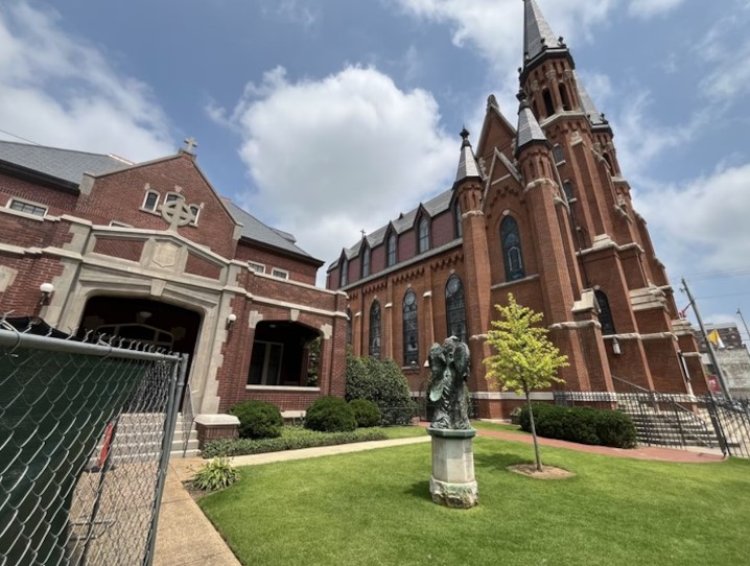Cathedral Murder: Birmingham Priest Gunned Down in 1921 Remembered Today
Kathleen Grimm from Yulee, Florida, recalls her father often sharing the story of a priest murdered in Alabama in 1921, using it as a lesson in faith. “My father would bring out this picture, recount the story, and emphasize the importance of standing strong in your beliefs,” said Grimm, who is a distant relative of the Rev. James E. Coyle. Coyle served as the pastor of the Cathedral of St. Paul in Birmingham from 1904 until his death in 1921.

Kathleen Grimm from Yulee, Florida, recalls her father often sharing the story of a priest murdered in Alabama in 1921, using it as a lesson in faith. “My father would bring out this picture, recount the story, and emphasize the importance of standing strong in your beliefs,” said Grimm, who is a distant relative of the Rev. James E. Coyle. Coyle served as the pastor of the Cathedral of St. Paul in Birmingham from 1904 until his death in 1921.
Grimm was a special guest on Thursday at the Cathedral of St. Paul in Birmingham during its annual memorial Mass, commemorating the 103rd anniversary of Coyle’s tragic death. The service was broadcast internationally by EWTN, the Catholic network based in Irondale.
On August 11, 1921, Coyle was shot to death on the porch of the rectory adjacent to the cathedral. In response, the congregation funded the construction of a new brick rectory on the same site, honoring the memory of Father Coyle.
“The current rectory was built to honor Father Coyle after his passing,” said the Rev. Bryan Jerabek, pastor of St. Paul’s Cathedral. “It’s a vital part of our history, and we are committed to preserving it.”
The cathedral has been raising funds to renovate the 102-year-old rectory, which had been experiencing structural issues. “We’re nearing the completion of these repairs to ensure its preservation,” Jerabek added. “It’s the last free-standing occupied residence in the business district, and we’re still living in our house here.”
The murder trial following Coyle’s killing was significant, particularly because of the involvement of future U.S. Supreme Court Justice Hugo Black. Black defended the accused, Rev. Edwin R. Stephenson, a Methodist minister and member of the Ku Klux Klan. Stephenson, who officiated weddings at the Jefferson County Courthouse, was accused of killing Coyle after the priest presided over the marriage of Stephenson’s daughter, Ruth, to a Puerto Rican man named Pedro Gussman. The Klan, deeply anti-Catholic at the time, funded Stephenson’s defense.
Hugo Black, who later joined the Klan and subsequently renounced his ties, used the trial to emphasize Gussman’s race, even dimming courtroom lights to highlight Gussman’s skin color. Stephenson was acquitted by a jury that included Klan members, a decision that remains controversial.
Jim Pinto, author of Killed in the Line of Duty, has documented the events surrounding Coyle’s death, noting that the priest had received other death threats from the Klan due to his outspoken defense of immigrants. Coyle, fully aware of the risks, continued his routine, including sitting on the rectory porch reading his prayer book the night he was killed. “He was the face of Catholicism in Birmingham,” Pinto said. “He was a martyr for the faith.”
After his acquittal, Stephenson never reconciled with his daughter, Ruth. Tragically, Gussman was killed in a hit-and-run accident in 1934, just steps away from where Coyle was murdered.
Anti-Catholic sentiment was pervasive in America during that era. Alabama even enacted a law in 1919 that allowed officials to search convents without a warrant, fearing Protestant girls would be forcibly converted to Catholicism and held against their will. Ruth’s conversion to Catholicism against her father’s wishes only heightened these fears, and Coyle’s vocal opposition to the Klan made him a target for violence.







